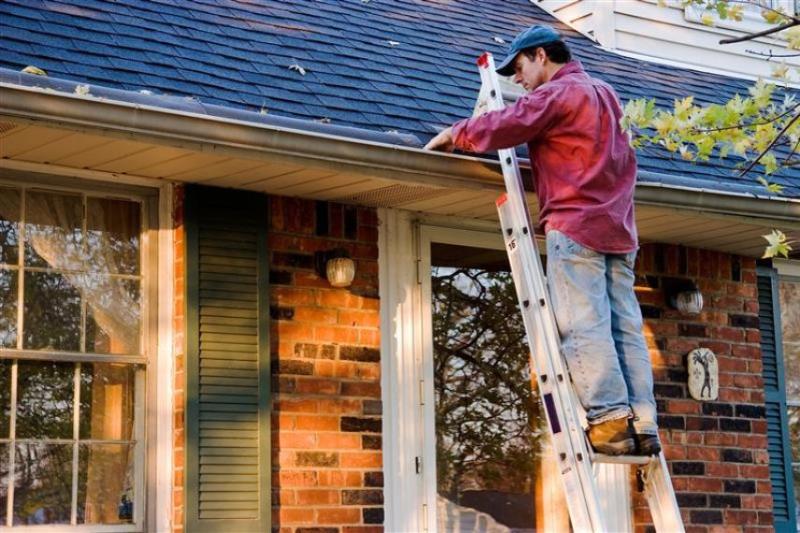
Here, we share our favourite home maintenance tips, discuss why you need a house maintenance checklist and share some tips on staying safe while doing DIY.
Why is it important to maintain your home?
Maintaining your home helps you keep your house in tip-top shape all year round.
It’s a lot cheaper and easier to prevent issues than to fix them. Plus, carrying out these maintenance tasks mean you can hopefully catch and fix issues early on before they become a bigger problem.
For example, it’s a lot easier to fix a broken or missing roof tile straight away, than dealing with a big leak in your attic later.
Plus, most home insurance policies expect you to keep your home in good condition. We won’t cover damage that’s been caused by wear or tear or because your home hasn’t been maintained properly.
Maintaining your home all year long
The best home maintenance tip is to stay proactive. A checklist can help with this.
We recommend making a monthly and seasonal to-do list to keep on top of looking after your home.
This lessens the chances of problems and invalidating your home insurance.
Monthly maintenance checklist
Monthly, we recommend:
- testing smoke alarms
- checking your boiler pressure
- looking for water leaks
- cleaning humid, mould-prone areas
- restocking cleaning supplies
- checking your plumbing
However, you can do most maintenance seasonally.
If you don't feel safe or comfortable enough to complete any of these jobs on your own, call in the professionals.
Remember, you should always call in experts for any electrical work or if you’re installing any gas appliances.
Seasonal home maintenance checklist
Different seasons bring different weather, which can have an impact on our homes.
Here are some maintenance tips and tricks to do in each season to prepare for all weather conditions.
Spring
- Clear your gutters - autumn and winter can lead to lots of debris build-up, so it’s important to clear and clean them when you can. Read our guide to gutter cleaning.
- Check the roof - after winter, it’s a good idea to check your roof for any damage from storms, cold and wet weather.
- Tidy up the garden - spring is a good time to tidy up your garden, clear away twigs and leaves, and check on your fencing. Most home insurers won’t cover your gate or fence in a storm, so use spring to check these are secure.
- Wipe down windows and doors - if you have wooden window frames or doors, cleaning them can help stop the wood from rotting.
- Give your home a spring clean - after the cold, dark winter days, the spring sunshine is the go-to time of year to tidy up, clean and sort out.
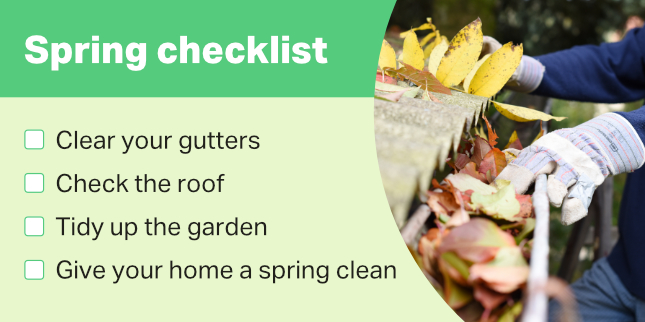
Summer
- Check trees and other large plants - falling trees and branches can damage your home when the weather gets worse, so use the summer months to check these and cut them back. Call a tree surgeon if it’s unsafe or you’re unable to do it yourself.
- Look for pests - pest damage tends to peak in the warmer months. Read our article on how to remove pests in your home.
- Ventilate your home - summer’s a good time to open windows and ventilate your house. It helps prevent mould, too.
- Clean out your fridge and freezer - it’s a good time to clean out your fridge and freezer, which helps keep them running. If your freezer breaks because of a sudden rise or fall in temperature, you can claim for the food lost from it.
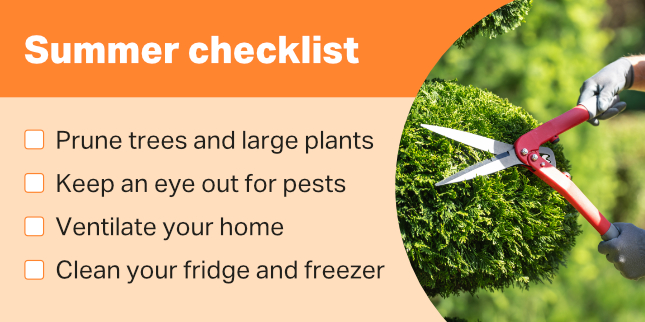
Autumn
- Service your boiler – read our guide on how to prepare your boiler for winter.
- Check your insulation - checking and replacing your insulation can save you money during the winter. High-quality insulation can increase your home’s value too.
- Seal window and wall cracks - do this before winter as it helps keep your house warm in the colder months.
- Bleed radiators – you should do this at least once a year to help keep warm water circulating and your central heating working. It’s better to bleed radiators in autumn when it’s milder.
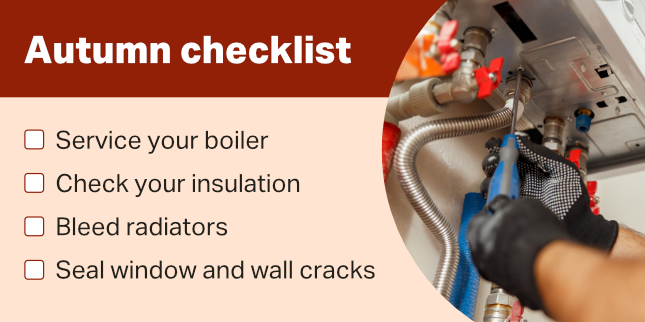
Winter
- Check your pipes - taking proactive measures is the best way to prevent burst pipes. Read more about how to prevent escape of water damage.
- Ventilate regularly - even though it’s cold, ventilating rooms occasionally when you’re at home is the best way to prevent mould.
- Clean your drains - it’s easy to prevent blocked drains. Usually, you only need a drain unblocker but sometimes, you’ll need to do more which is where our drain unblocking guide comes in handy.
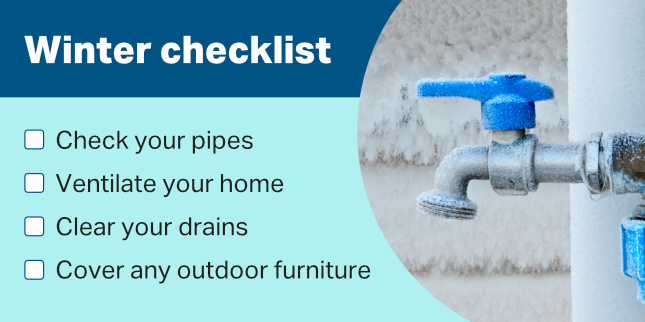
Preparing for DIY
If you do need to take on any DIY, like fixing roof tiles or pruning trees, there are a few things to consider before you get stuck in.
Call a professional if you’re unsure
Don’t attempt anything you’re not comfortable with. If you’re not prepared or unsure you’ll be safe, hire a professional.
Or if any of your friends or family are handy with tools, you could ask them to help you and teach you any techniques along the way.
Dress appropriately for the task
Wear old clothes that you’re comfortable getting messy and stained, especially if you’re working with paint or wood stain.
If you’re using power tools, blades or machinery, avoid wearing loose-fitting or floaty clothing as it can get trapped and lead to injuries. This also goes for long hair and jewellery.
Ideally, wear safety goggles and protective gloves where needed.
Don’t be afraid of bathroom or kitchen DIY
Most of us leave bathrooms and kitchens to the professionals, but it’s possible to do your own plumbing or tiling if you feel you have the skills for it.
We recommend speaking to an expert before you get started, like an employee in your local hardware or plumbing store.
Start small and do your research before you begin. If in doubt, contact a qualified tradesperson when dealing with electricity and water.
Check your home insurance
Always read your home insurance documents before starting a big project and tell your insurer first to avoid invalidating your insurance in the process.


